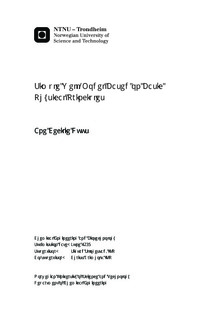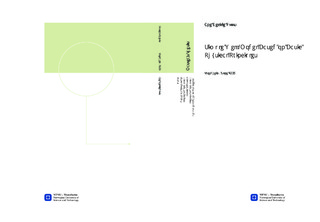| dc.description.abstract | To reduce loss, real-time optimization (RTO) is today used in most petroleum industry. Minimizing loss is achieved by avoiding over- or underutilization of the production system, and keeping the process as close to the capacity constraints as possible. The dynamic nature of the petroleum extraction makes the process conditions change rapidly. An example is the fluctuating feed and compositions from the wells, which causes a "drift" in the gas-oil ratio(GOR). The changing process conditions will affect the optimal set-points, thus, a frequent re-optimization is necessary to keep the operation close to the optimum. A challenge is that a frequent re-optimization requires updated measurements and a very good model for both process and disturbances. This can be difficult to retrieve.Self-optimizing control is an alternative to circumvent the whole process of continuous re-optimization. The concept of this method is to control variables which, when held at a constant set-point, can keep the process close to the optimum and this way keep the loss at an acceptable level.The scope of this thesis is to develop a simple MATLAB-model of a petroleum well by using basic physical principles. The model can later be used locate good control variables (CV's) for self-optimizing control. To verify the flow and pressure conditions in our model, a similar model is made in OLGA, which is leading simulation software in the field of simulating multiphase transport through pipelines. Prior to making the model, a test is conducted where we find that the well head pressure is a potential self-optimizing variable in our system. By simulations in OLGA we find that the the flow from the reservoir into the well is a linear function of bottom hole pressure, and therefore that Darcy's law can give a good estimation of these relations. OLGA simulations also verify that the compressibility equation of state gives a good estimate for the pressure profile through the pipe. For the density profile, however, this estimation is slightly more inaccurate. Finally, two different approaches for valve modelling is studied; the Valve Equation Approach and the Bernoulli Approach. Here we find that the valve equation is best suited for our case.The model works best for the or the purpose of obtaining information on trends and approximate pressure-values at different as a function of valve opening. However, this is a very simplified model, which is also partly adapted to dataseries obtained from OLGA, and should therefore be improved at several areas and tested before used for other purposes. | nb_NO |

